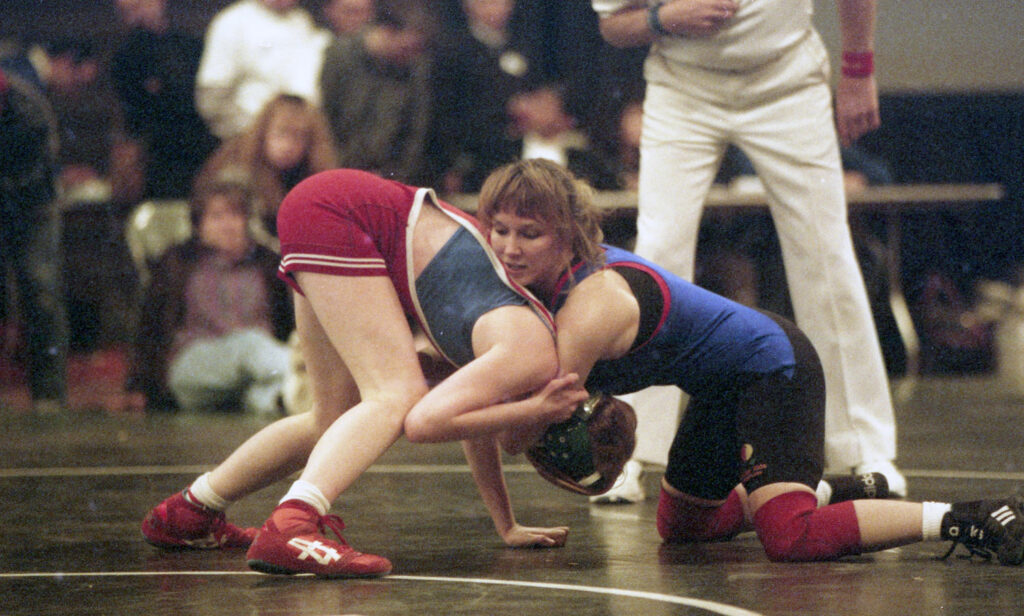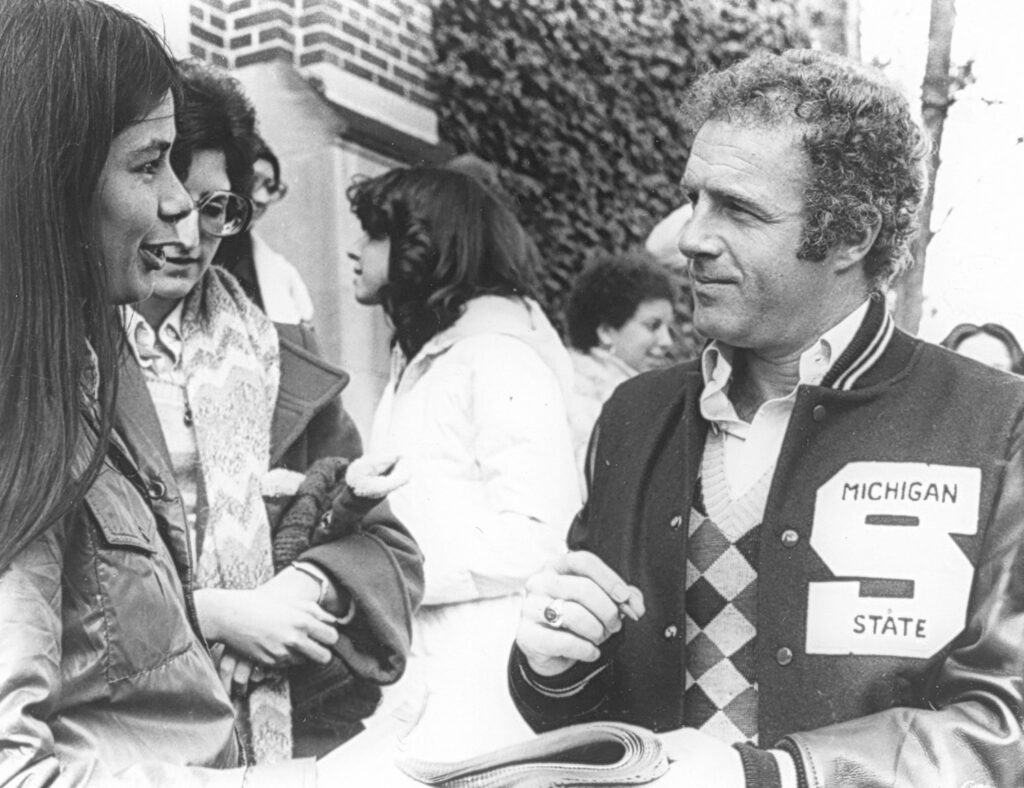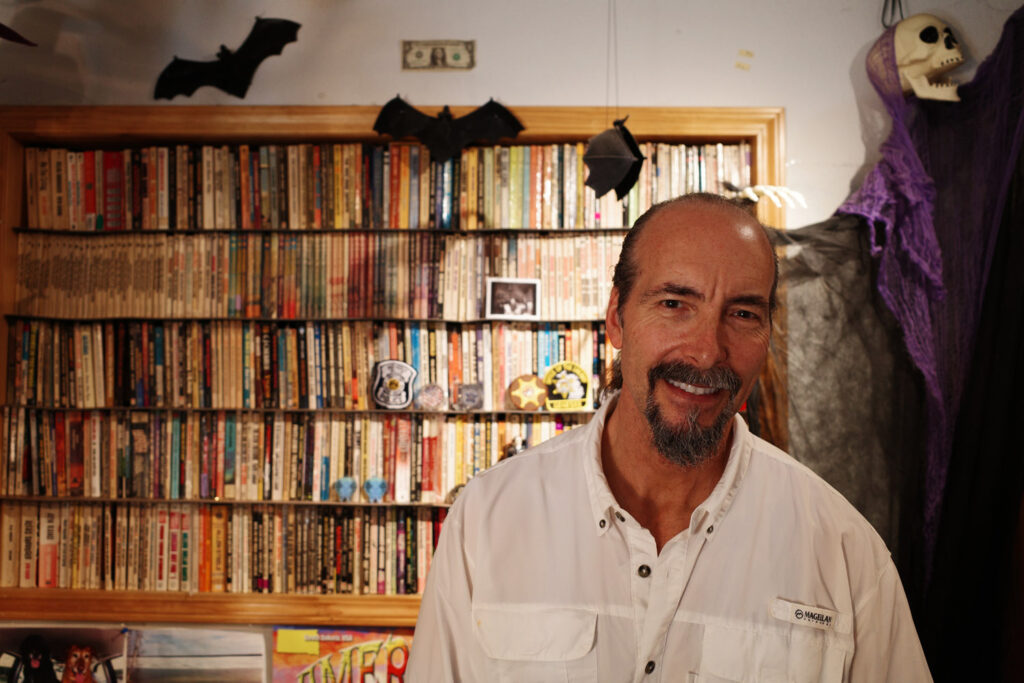In the old days, if a girl wanted to wrestle in high school, she had to compete against boys. No longer. Now 45 states – including Michigan – sanction girls’ wrestling as a separate sport, making it the fastest-growing high school sport in America, the NCAA is expected to fully sanction it in 2026, and this year’s Olympic competition drew sold-out crowds in Paris.
But here’s something you probably didn’t know: The entire sport owes its existence to a 9-year-old little girl from Ann Arbor.
In 1975, Tricia McNaughton Saunders was a 45-pound third-grader when she essentially created the sport of women’s wrestling. Then she became the best in the world at it, winning four world titles and 11 U.S. championships.
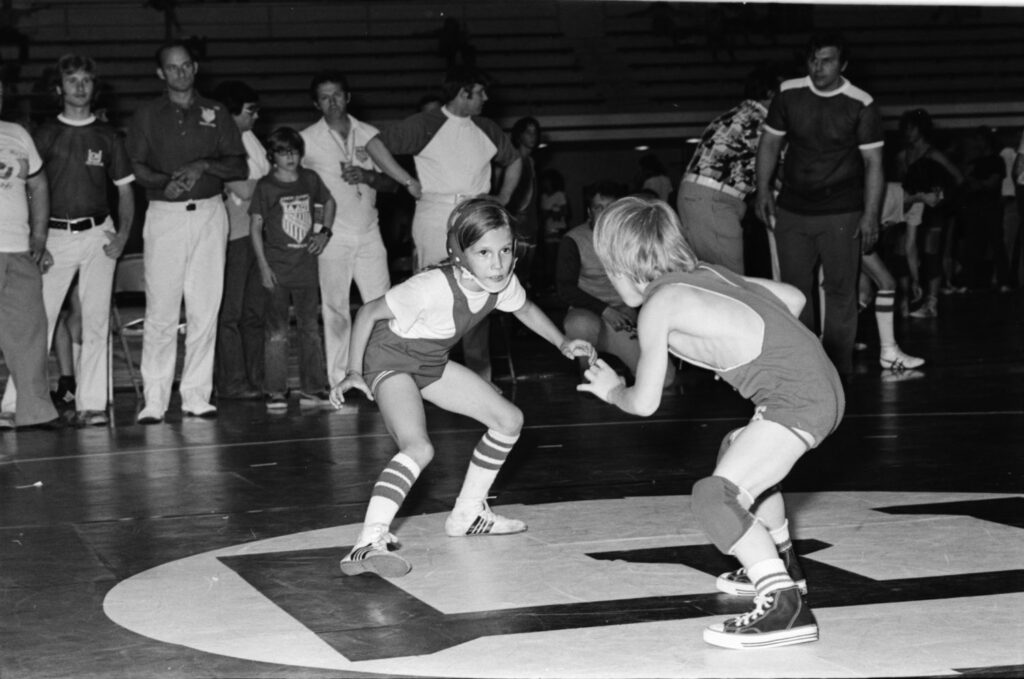
She’s revered at every meet she attends. Everybody asks for an autograph or a selfie from the woman who pioneered the sport, but not many people in Michigan know her story.
Now 58, Saunders lives in Phoenix and works as a physician’s assistant. She’s married to Townsend Saunders, a 1996 Olympic wrestling silver medalist. Their son, Townsend III, is engaged to Dominique Parrish, a 2023 women’s wrestling world champion and a member of the 2024 USA Olympic team.
Tricia watched all the Olympic wrestling on TV, and, with the Olympics still fresh in her mind, she took some time to talk about her history and her legacy.
One Tough Little Girl
Her bloodlines in the sport run deep. Her grandfather, Al Steinke, was an All-American wrestler at the University of Michigan and her father, James, was a high-school state champion. Her older brother Jamie and younger brother Andy showed flashes of talent, so it was only natural that she might be pretty good at it, too.
What Tricia couldn’t understand, though, was why her brothers could be on a wrestling team, but she couldn’t.
She accepted that her older brother could wrestle simply because he was older, but “it didn’t make sense that my little brother could wrestle, too, because I knew I could beat him up,” she said.
With the blessing of her parents, James and Carol, the wrestling club eventually let little Tricia join the team. And then she started beating everybody up.
Among the local boys she was regularly beating during wrestling practice was a neighborhood kid named Zeke Jones. Tricia and Zeke wrestled almost every day back then, and Tricia won every time.
This is noteworthy because a decade or so later, in 1992, Zeke Jones won an Olympic silver medal in wrestling. As an adult, he was one of the best wrestlers in the world, but as a kid, he couldn’t beat the little girl in braids who lived a few houses away. The two are great friends today.
Tricia was winning about 90% of her matches and the local wrestling crowd got used to seeing her. “They knew I was a girl because I had long hair that was braided on the back and because I wore a T-shirt under my singlet, but they all treated me normally,” she said.
In the spring of 1975, Tricia won a couple local tournaments that qualified her to compete in a huge, much more prestigious meet in nearby Ypsilanti–the 1975 Eastern National Freestyle Wrestling Tournament, sponsored by the AAU. The meet was scheduled for late June at Eastern Michigan University’s Bowen Field House.
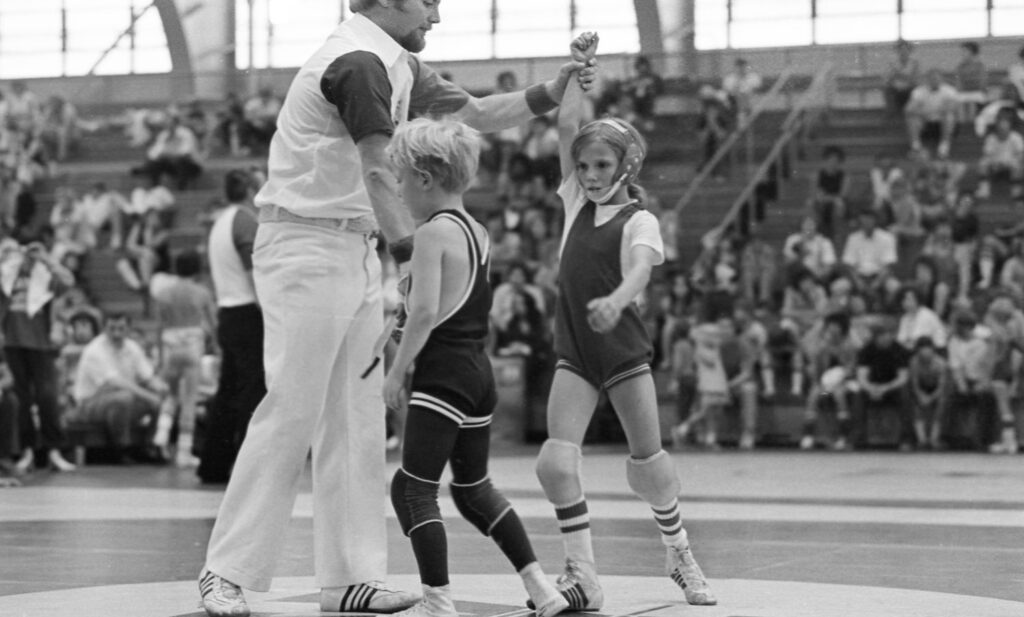
When the AAU officials saw the list of wrestlers who had qualified from Ann Arbor, and they saw the name “Patricia McNaughton” on the list, they blew a gasket.
At the time, AAU was the major sanctioning body for most youth sports in America, and while it allowed girls to compete in a few sports, it specifically barred them from competing in wrestling and boxing.
When Tricia, her parents and coaches found out that the AAU wasn’t going to let her compete, all heck broke loose.
“They wouldn’t even let me weigh in,” she said. “My parents knew this was wrong, so they decided to fight it.”
A legendary civil rights attorney from Ann Arbor named Jean Ledwith King agreed to take the case. They filed suit in federal court in Detroit, and the argument they used was legally brilliant: Because the wrestling meet was slated to take place in a public building, barring a girl from competing would be a Title IX violation.

The AAU and EMU decided to fight little Tricia, and on June 19, 1975, they went to trial. By now, the media had picked up on the story, and it was front-page news not just in Michigan, but across the country. Everybody was following the story of the 9-year-old little girl from Ann Arbor who just wanted to wrestle.
Tricia had to go to court for the proceedings, even though she didn’t fully comprehend what was happening. She thought her case was fairly simple.
“I said, ‘Mom, you just need to tell them that I want to wrestle!’ I thought if my mom told them that, they would just let me in,” Tricia said.
Once the story started hitting the media, the McNaughtons also started to field a fair amount of abuse directed at their little girl. But Tricia’s parents never wavered. As Carol told a reporter at the time, “If you have values and your children look to you for guidance, they will make you put your money where your mouth is. We couldn’t have faced our children unless we had done our best.”
With seemingly the whole world watching, the case went to trial and the judge made his ruling. He slammed the AAU and said that absolutely, Tricia McNaughton will be allowed to compete. The judge said that “states must take a leadership role in stamping out the denials of equal protection wherever they occur.”
And it’s worth noting that the judge, John Feikens, was no 1970s bleeding-heart liberal. He was a former chairman of the Michigan Republican Party and had been appointed to the bench by President Richard Nixon. But he knew injustice when he saw it, and in his eyes, little Tricia McNaughton was being wronged.
Two days later, the AAU meet took place at EMU’s Bowen Field House. Wearing her signature white T-shirt under her singlet, Tricia took to the mat.
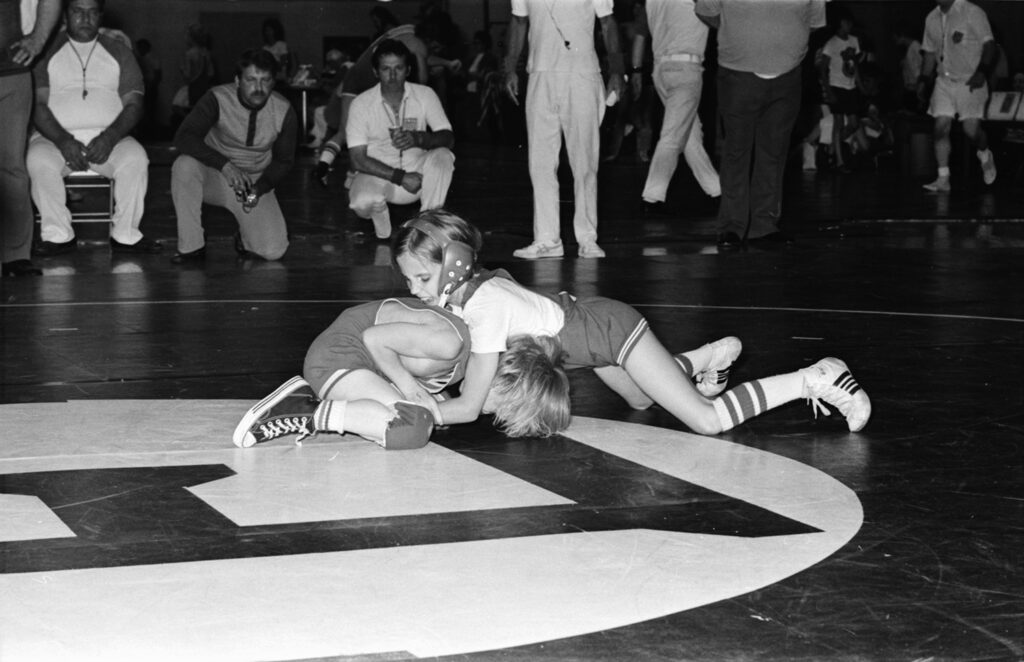
In her first match, Tricia beat the state champion from Virginia, a boy named Karl Zylks, 18-0. Holy cow, the crowd thought. Maybe this little girl really can wrestle. In the next match, she whipped Ross Smith of Rochester 9-0.
Then she lost on a last-second takedown and lost another close match to the Ohio state champion, John Garcia, and ended up finishing fourth in the freestyle competition. The next day, she competed in the Greco-Roman competition (a style of wrestling where you can’t use your legs) and took second.
A pretty darn good weekend for any wrestler, to be sure, let alone the only girl in the entire competition.
As a result of the lawsuit, the AAU realized that any time one of its meets was going to be held in a public building (as most of them were), it couldn’t bar girls from competing. The organization would get sued and lose every time.
All because of the 9-year-old from Ann Arbor, the AAU quietly dropped its boys-only policy when it came to wrestling. Girls would be allowed to wrestle alongside boys anytime they qualified for a tournament.
For Tricia, though, that wasn’t the end of the battle. It was only the beginning.
A Fighter at Heart
Tricia went to Scarlett Middle School in Ann Arbor, which had a wrestling team. But the school wouldn’t let her compete, even though she was probably the best wrestler walking the halls.
“The coach just wouldn’t let me wrestle,” Tricia said. “Same thing in high school, so I just did gymnastics and a few other sports. I didn’t wrestle for the next 10 years.”
Tricia eventually went to college at the University of Wisconsin, and there was no opportunity for women to wrestle there. So she got an education and moved on. But then she got a call from her old friend Zeke Jones, who was by now a collegiate wrestling star at Arizona State University, along with her brother, Jamie.
Jones had just gotten back from the 1989 world championships and saw that there was now an international women’s wrestling competition. “He said, ‘You got to come back and start wrestling again.’ So I did. I moved to Arizona and started training again,” she said.
The problem, though, was this: While women’s wrestling had become a sport on the international level, it was still not a sport in the U.S. To compete against other women from across the country and internationally, she had to get USA Wrestling to recognize the women’s sport.
She met a lot of resistance but wouldn’t take no for an answer. This time, it didn’t take a lawsuit. It just took a lot of grit and determination. The USA Wrestling officials finally agreed to support her.
In 1992, she competed in the World Wrestling Championships in France, wrestling against other women for pretty much the first time in her life (she had one female training partner back in the states, but had trained pretty much with all men).
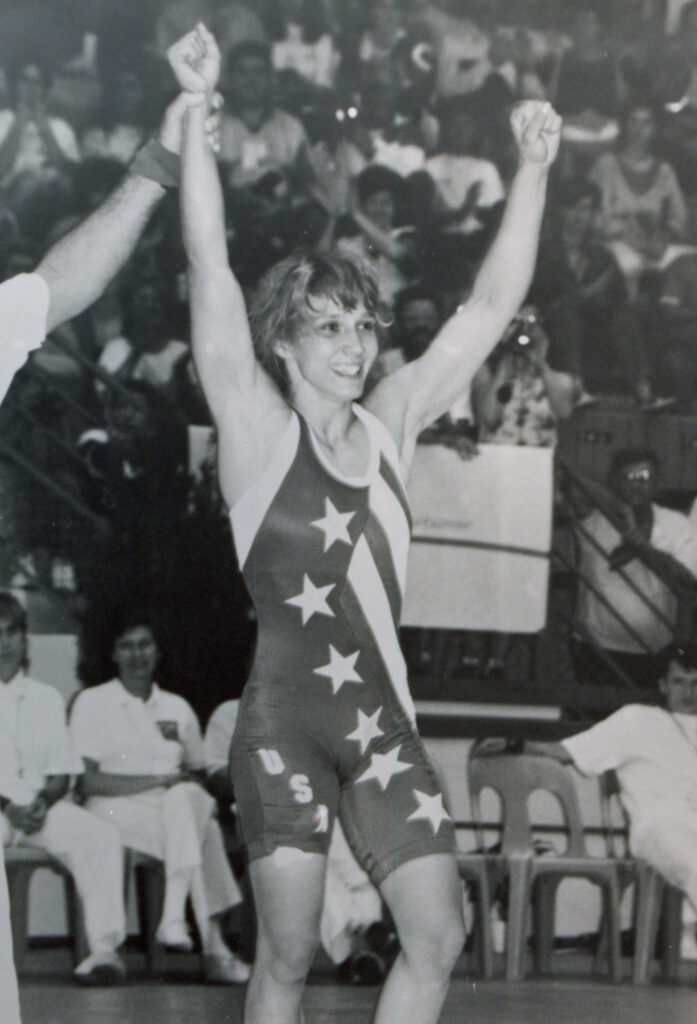
Tricia won the gold medal in the 103.5-pound weight class, becoming the first American woman to win a world wrestling championship. She also married her husband that year.
She followed that up with a silver medal in 1993 and then three more gold medals in 1996, 1998 and 1999. She also won a staggering 11 U.S. national championships and retired from the sport having never lost a match to another American female wrestler.
She took a break in 1995 and 1997 for the births of her children but never stopped competing. She won three of her international gold medals after she became a mom.
An Olympic Legacy
While Saunders was winning all those world championships in the 1990s, women’s wrestling was still not an Olympic sport. That didn’t happen until 2004, by which time she had stopped competing. So she went to the 2004 Games in Athens as one of two coaches of the first-ever U.S. Olympic women’s wrestling team instead.
She watched with pride as her athletes won two medals – a silver and a bronze. Silver medalist Sara McMann told a reporter at the time that part of that medal belonged to her legendary coach. “She’s the one who opened the door for us,” McMann said. “We don’t want her work to be in vain.”
Saunders still sees plenty of wrestling matches in person – her son’s fiancée is one of the best in the world, after all – and it’s always nice for her to be recognized at the meets. For her, though, it’s mostly just rewarding seeing people excel at their sport.
“This sport is so hard,” she said. “It’s so hard, you know, and all of these little things that I did on the outside, people talking about my legacy of changing things, the court case and all that, but to me in my head, 99% of all I really was thinking about was wrestling and technique and who I wanted to beat and where I wanted to go.”
Buddy Moorehouse teaches documentary filmmaking at Hillsdale College.
